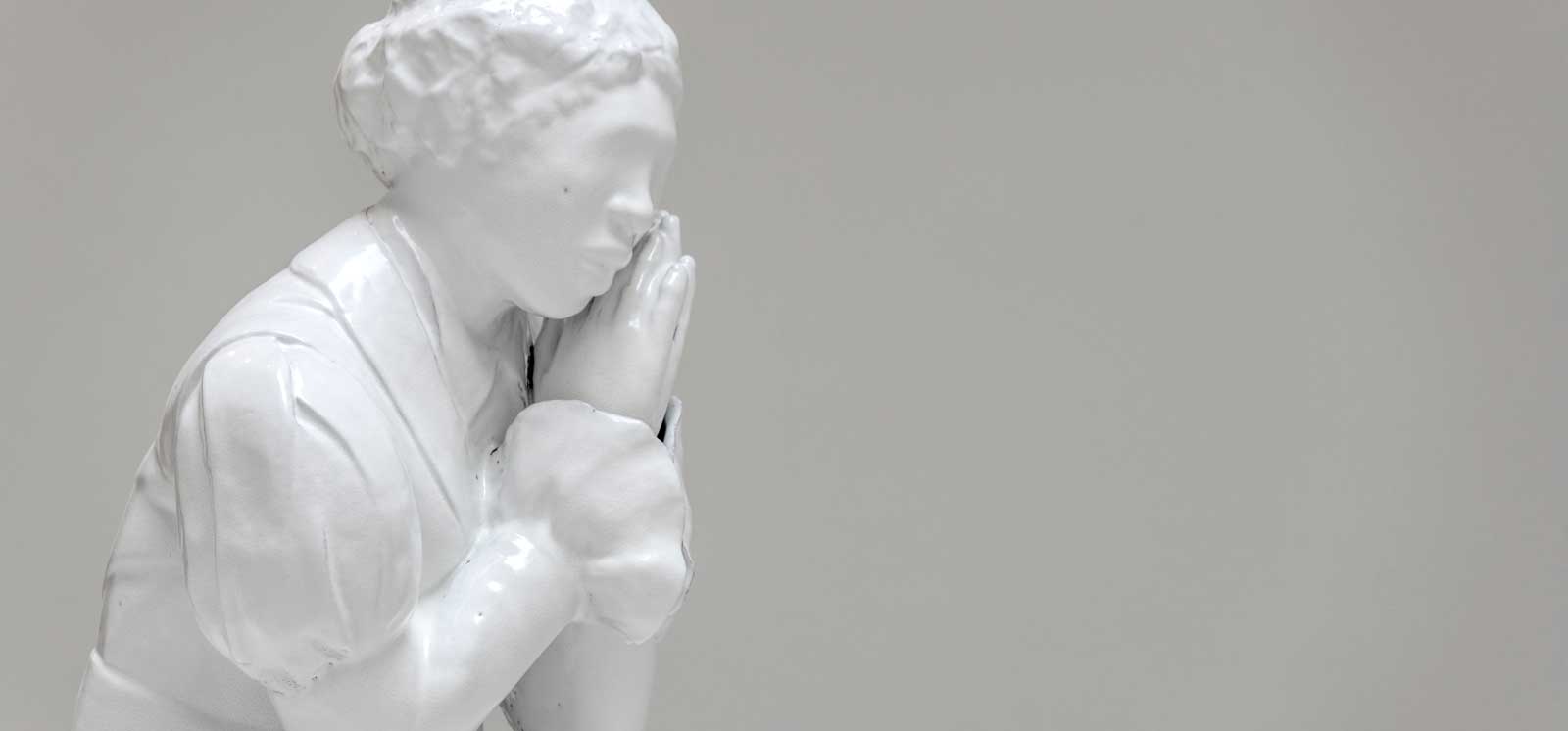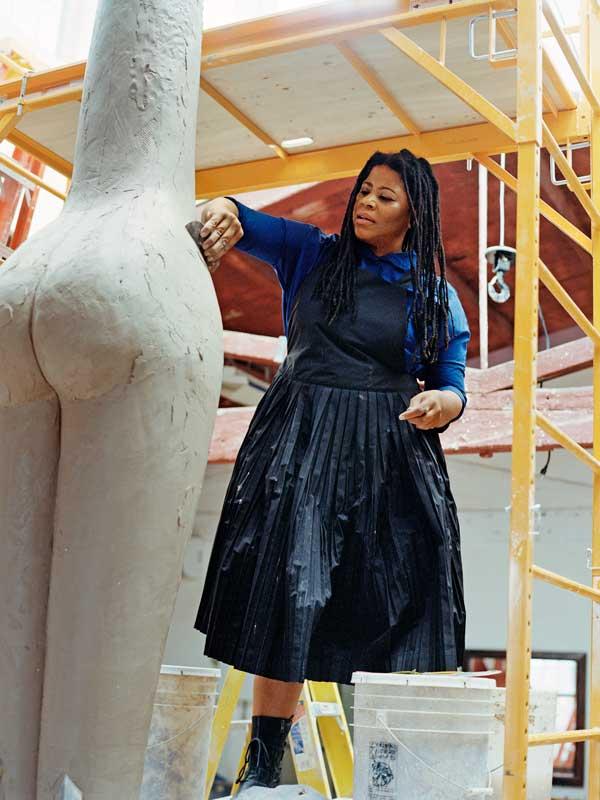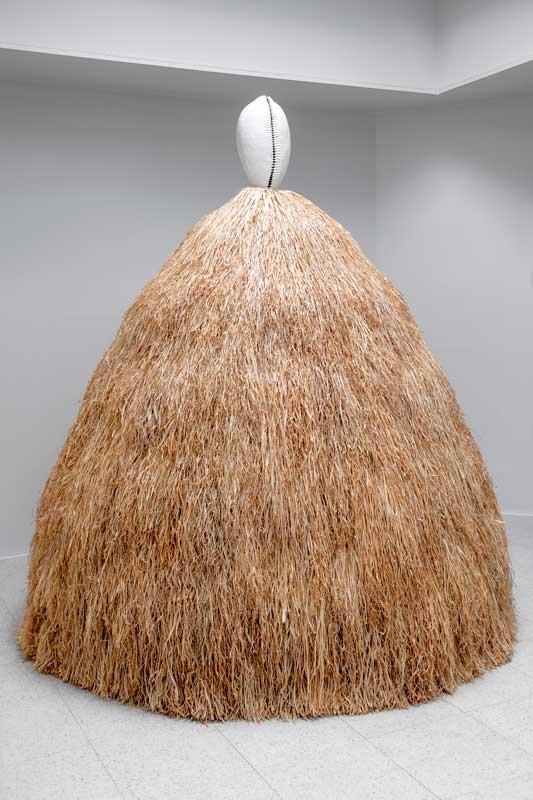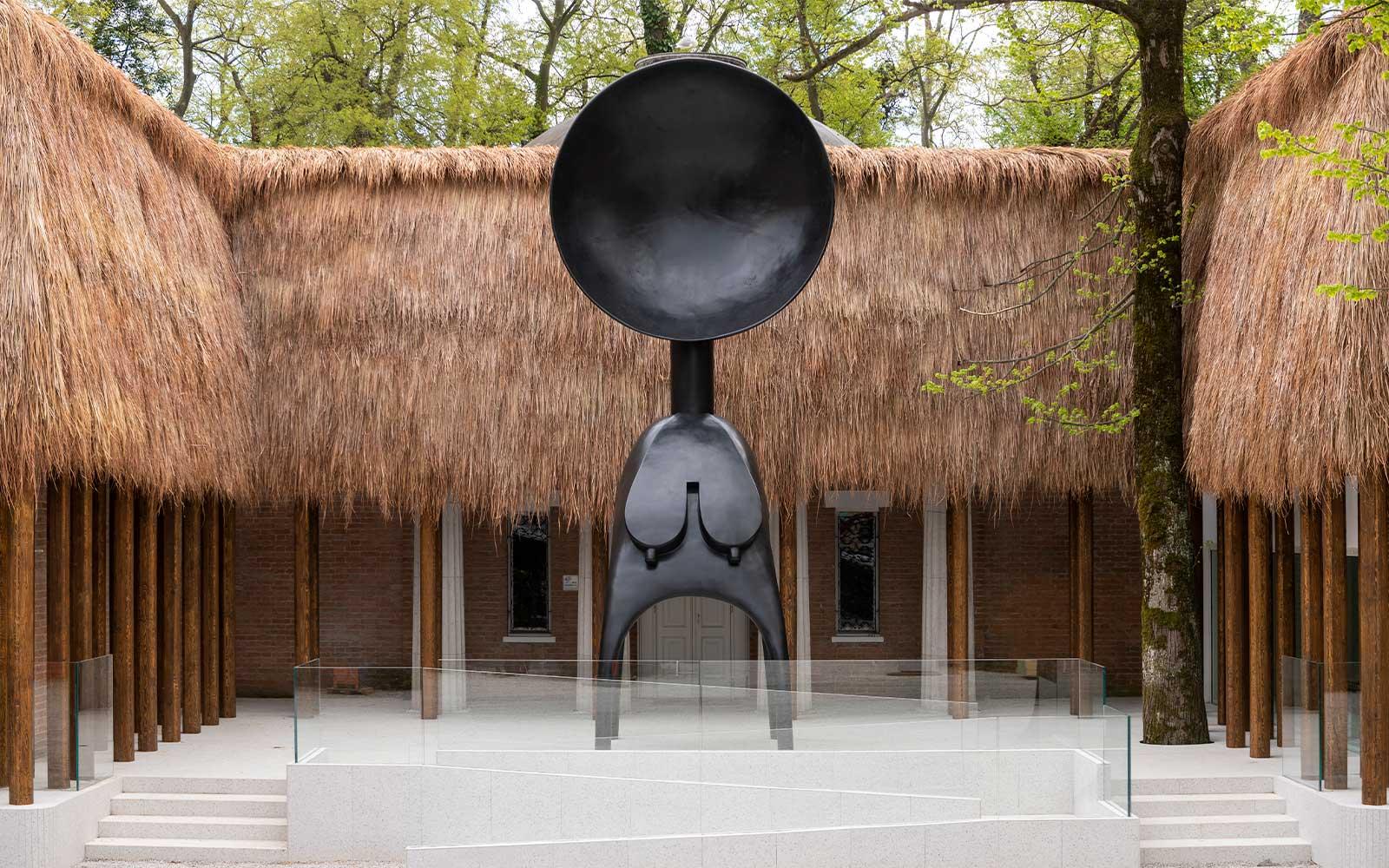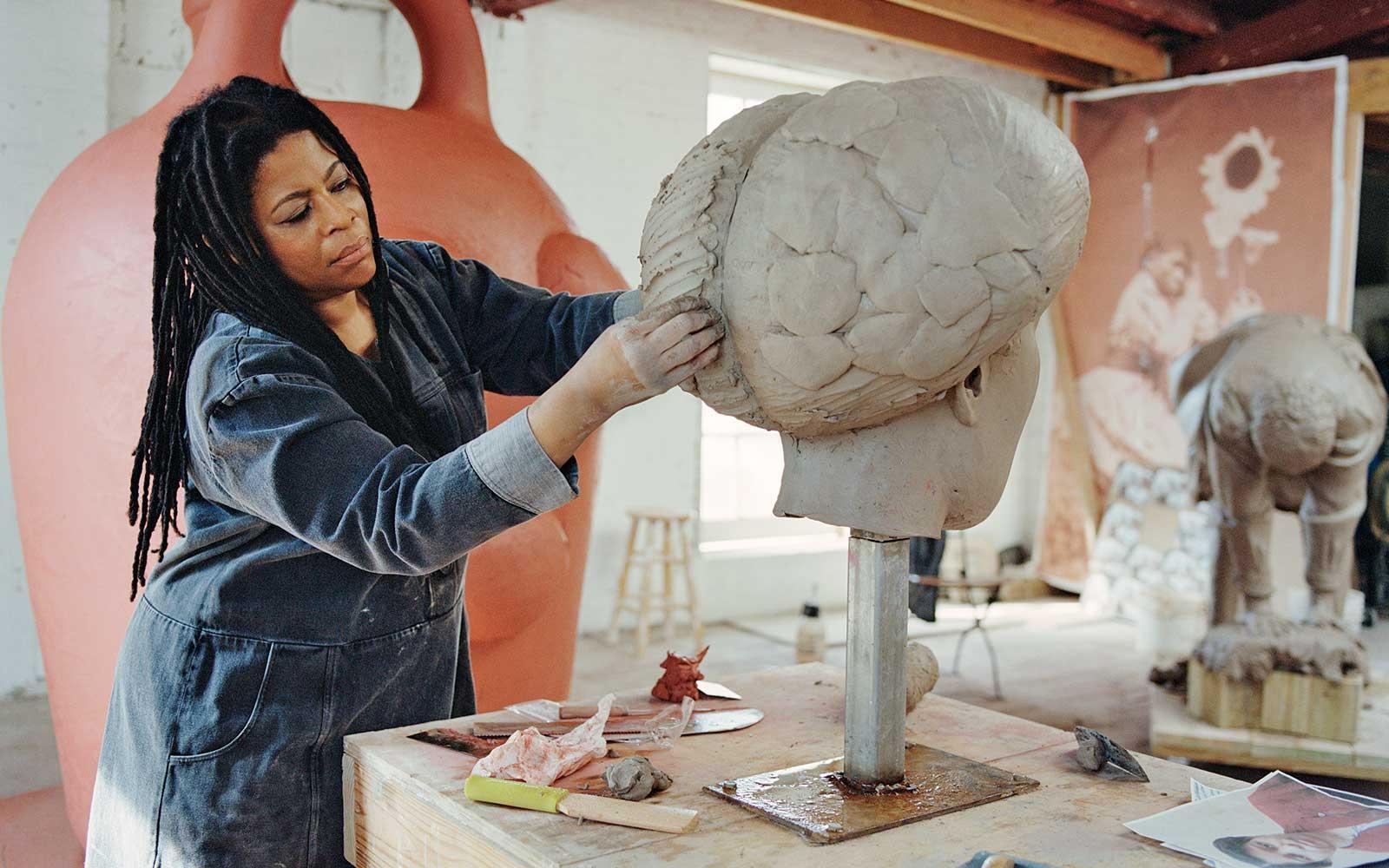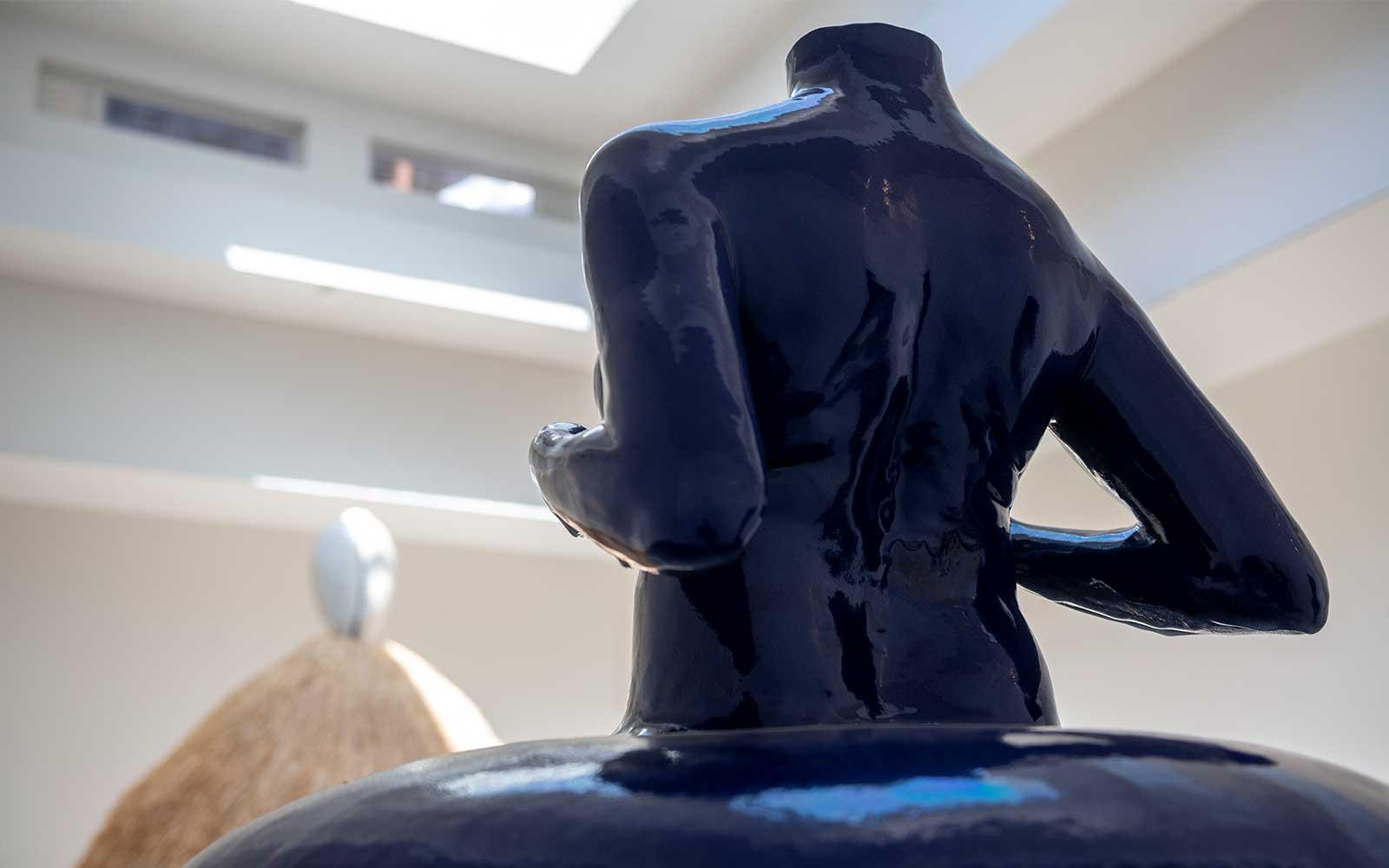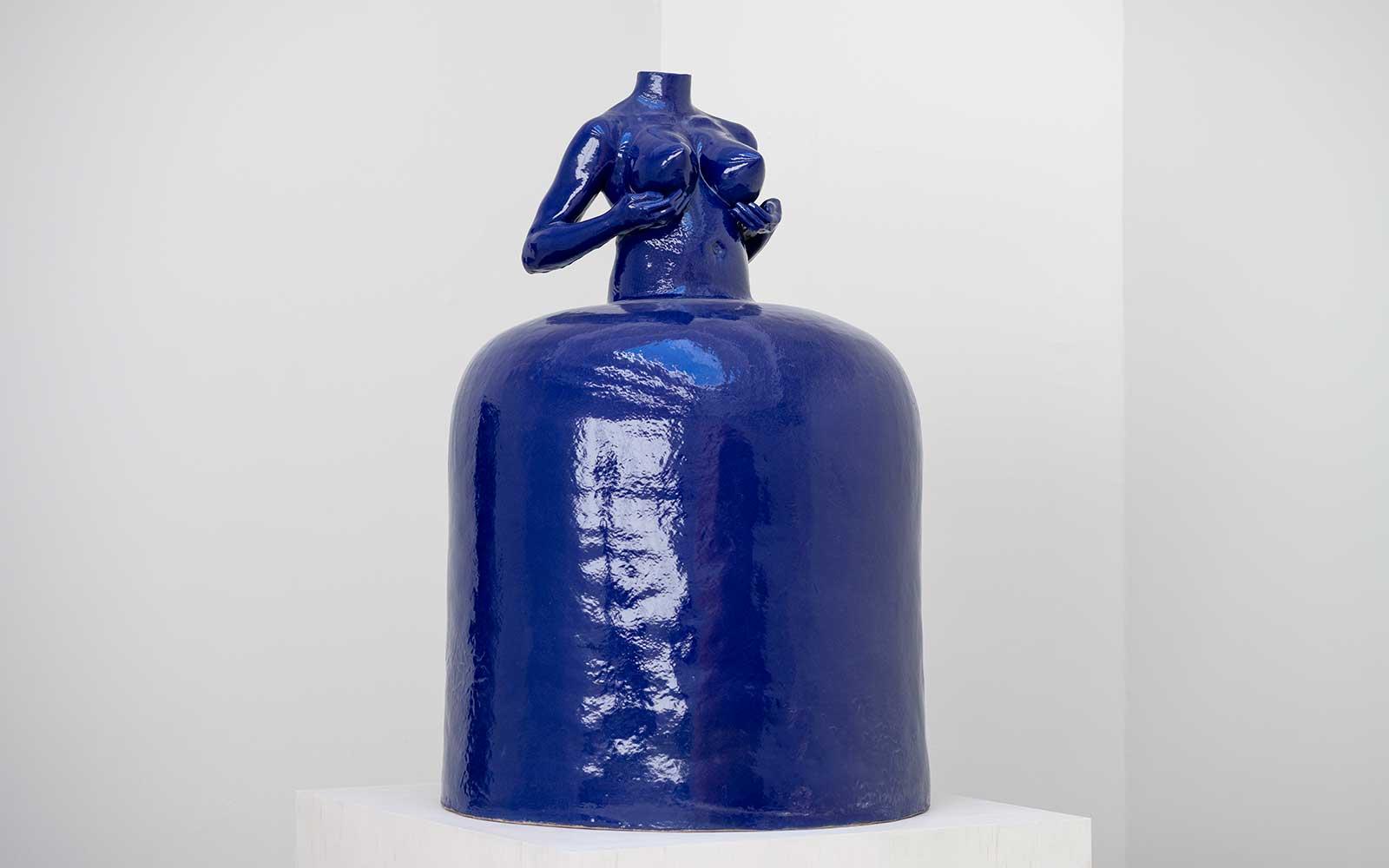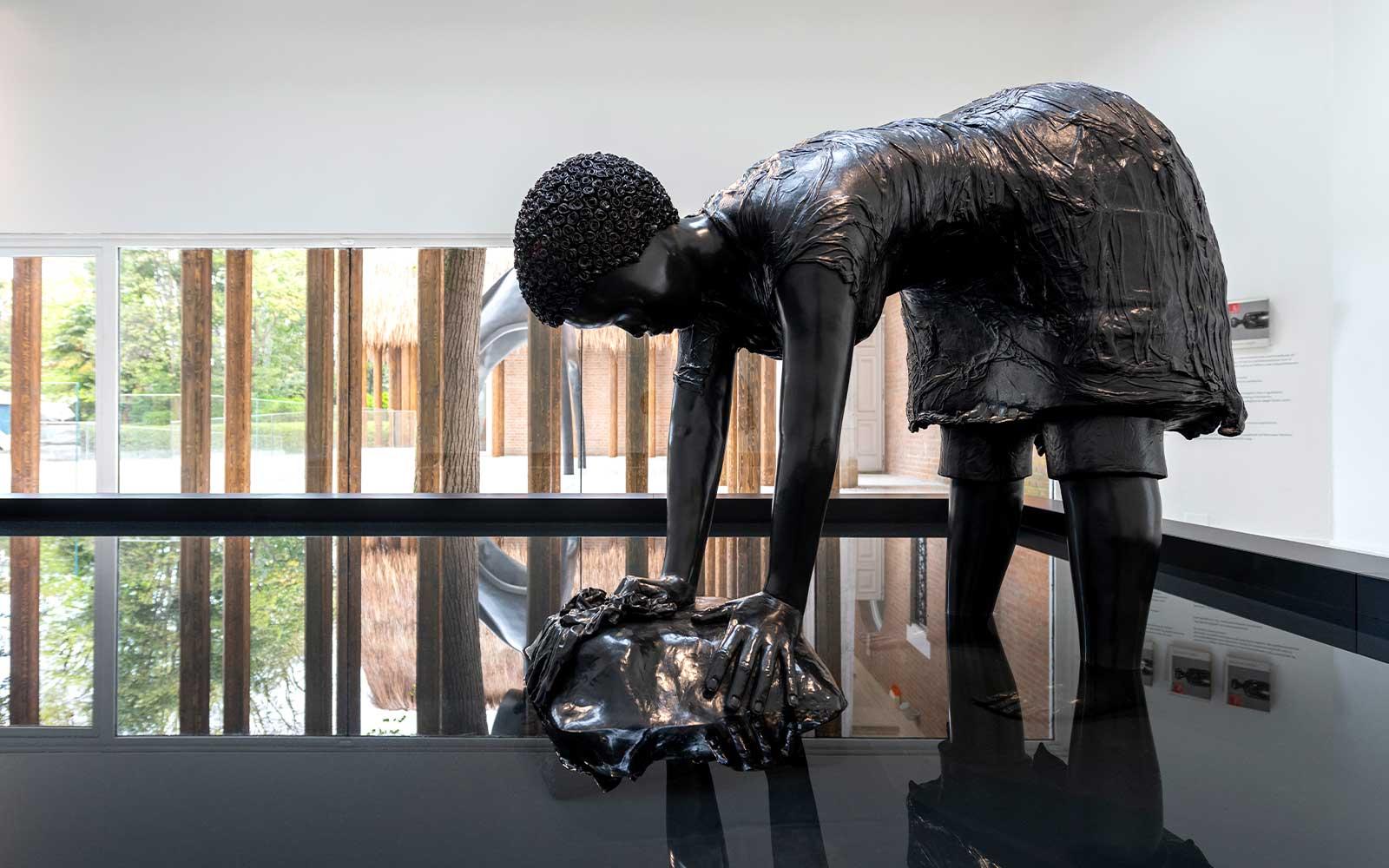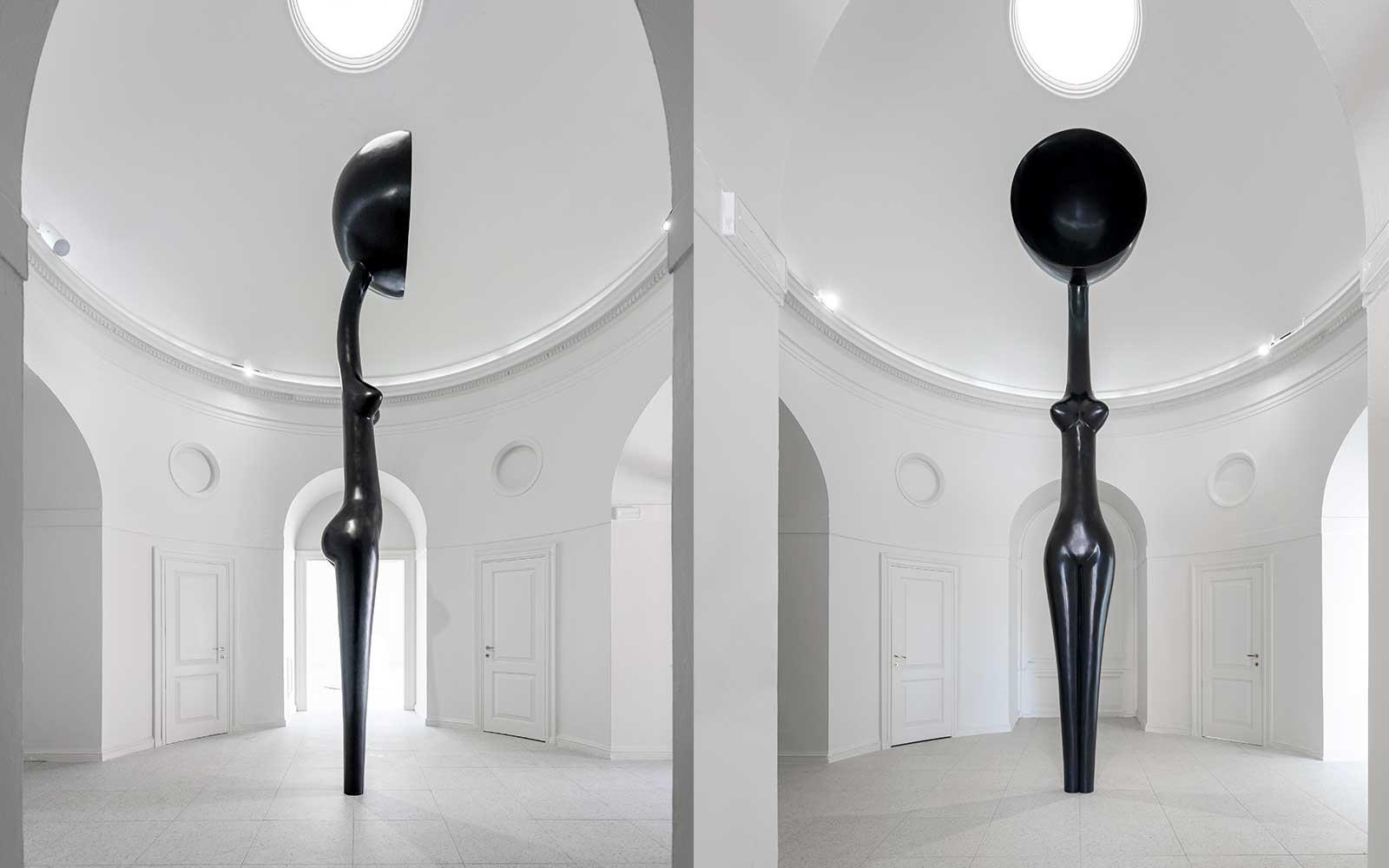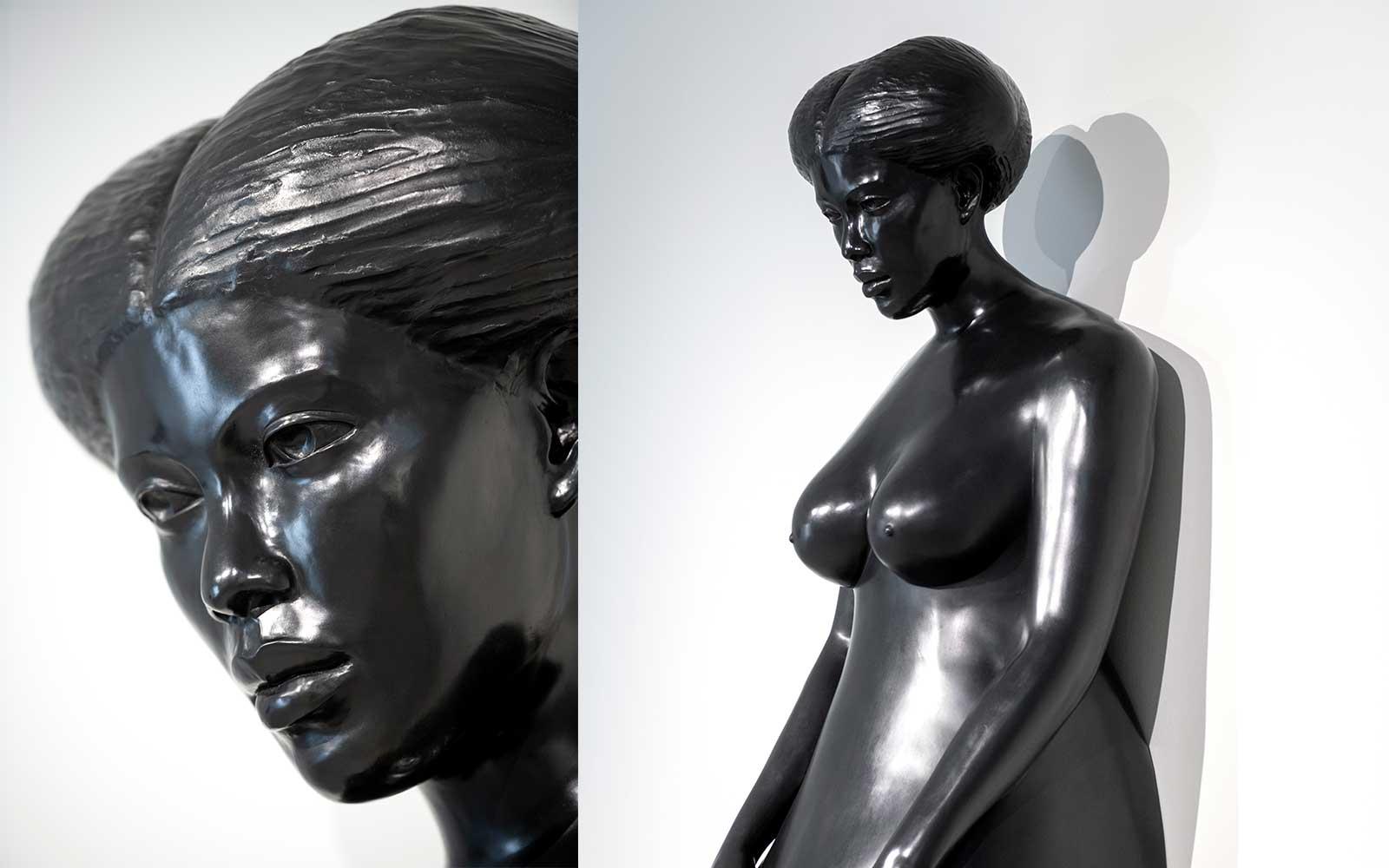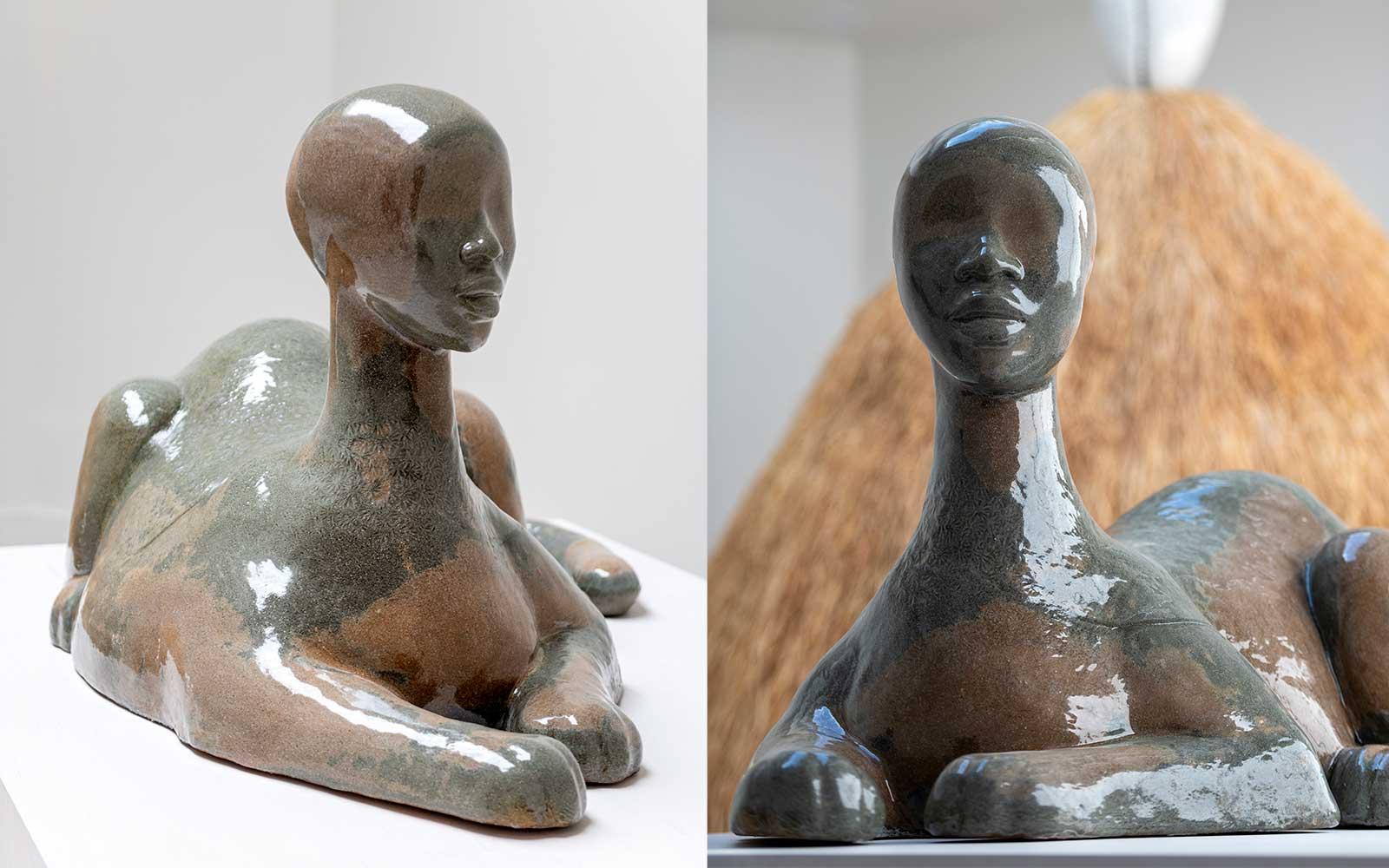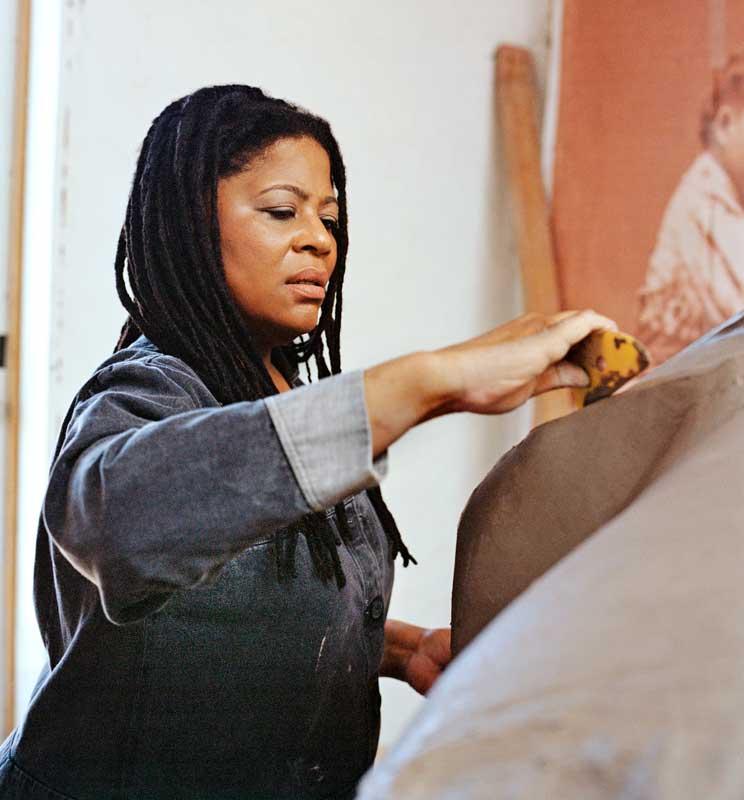A richly thatched roof supported by wooden poles nearly obliterates the Doric columns of the U.S. Pavilion at this year’s Venice Biennale. The effect exceeded the expectations of Simone Leigh, America’s rising art world star and the first Black female artist chosen to represent the country at this widely anticipated exhibition—Simone Leigh: Sovereignty.
Leigh conceptualized the architectural transformation of the classic, Jeffersonian structure. She says the final result was meant to evoke, “a 1930s African Palace.” She personally chose the Italian architect Pierpaolo Martiradonn to realize her vision. The final iteration provides a powerful showcase that simultaneously obscures our colonial past while making the historical erasure of African cultural influence visible. The irony that the original Pavilion was built in 1930 was surely not lost on Leigh.
Inclusion in the 59th International Art Exhibition of La Biennale di Venezia, which will run through November 27, 2022, further solidifies Leigh’s stature on the world stage. Leigh’s achievements have also been recognized during this event with a Golden Lion, the top award given by the Biennale jury. The prize was presented to Leigh alongside British artist Sonia Boyce in acknowledgment of each artist’s national Pavilion and their contributions to Cecilia Alemani’s main group show, Milk of Dreams. This marks the first time Black female artists have received the prestigious award.




